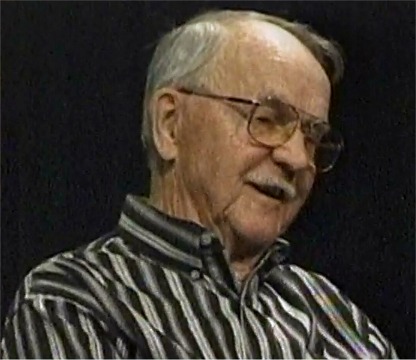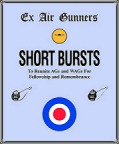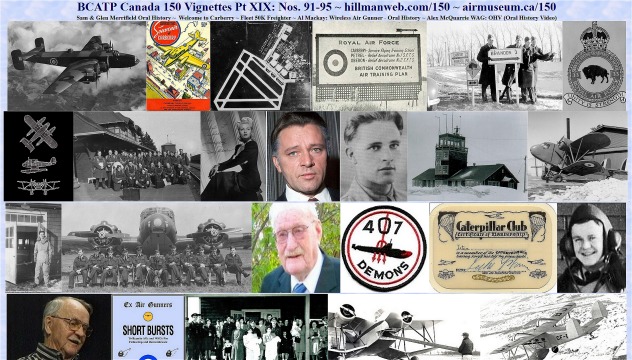094 of
150: Al Mackay - Wireless Air Gunner - Oral History
Allan D. MacKay, Fillmore Saskatchewan (AC2, LAC,
Sgt., Flight Sgt., WO2, WO1, PO, FO).
Enlisted, Brandon Manitoba October 1940 as Aircrew.
Sworn in July 14/1941 – Vancouver B.C.
Was one of the first Army Trainees at (Artillery School)
A4 Brandon
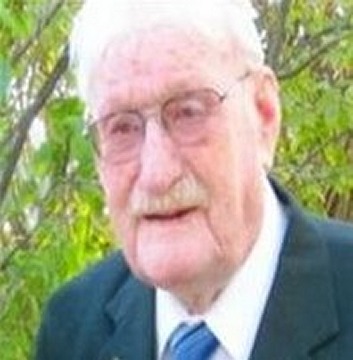 At that
time, 21-year-olds (army enlistees) were given one month training. So I
was a "Grenadier" for a month, but had already decided on the Air Force.
No propaganda had any influence on my decision to join the RCAF – it just
seemed the right time and of course, everyone wanted to be a pilot. But
at that time they had too many pilots so my next choice was Wireless
Air Gunner.
At that
time, 21-year-olds (army enlistees) were given one month training. So I
was a "Grenadier" for a month, but had already decided on the Air Force.
No propaganda had any influence on my decision to join the RCAF – it just
seemed the right time and of course, everyone wanted to be a pilot. But
at that time they had too many pilots so my next choice was Wireless
Air Gunner.
For training, I arrived in Brandon on July 17, 1941 and
was posted to the Brandon Manning Depot. When we arrived from Vancouver,
the Manning Depot was full so us ERKS (ground crew) were housed on the
3rd Floor of #33 Tenth Street in Brandon – hot as hell! One week later
we got into No. 2 Manning Deport at 10th and Victoria Avenue. We were there
six weeks – mostly Guard Duty. But seeing as how I had had experience in
marching, I was put on the drill team - "Big Deal!"
The food was good and the cow barn smell was mostly gone
(prior to being No. Manning Depot, the Wheat City Arena was home to agricultural
events which offered housing for animals in attached barns). Had a great
bunch of mates – no problems. We left for Claresholm, Alberta for six weeks
of General Duties -- then in October 1941 we went to Wireless School in
Winnipeg, Manitoba. It was at the old Normal School in "Tuxedo" (suburb
of Wpg). We had to attain 35 words per minute in Morse Code, learn about
radio receivers and transmitters, but there was no radar training yet.
We had some radio training in Tiger Moth aircraft and some in the Norseman-
mostly over Lake Winnipeg and Lake Manitoba.
We had very good instructors. One was Lloyd Lee from around
Waskada, Manitoba and he was a genius in radio. The only real thrill other
than 'Girls' was a Virden pilot who loved to come down on the lake on the
ice and bump the front wheel on ripples in the ice – it scared hell out
of us.
Graduation from wireless was no big deal. We just received
our "Spark’s Badge" then were posted to Bombing and Gunnery School at McDonald,
Manitoba. Training there was in the Fairey Battle -- some had been in Dunkirk
and looked like it. The meals were always good, probably because I was
such a fine fellow. I only had one bad experience in Winnipeg – a fine
young man shot himself in a vestibule on Portage Avenue – it was very sad.
Our Wings Parade in McDonald was very well put on and
on of course, we were then Sergeants.
I was posted to Ferry Command and given one month leave.
While on leave my posting was cancelled as no planes were available. So
I was posted to Gaspe, Quebec for Ground Duty for three months. That consisted
of drinking beer – Black Horse Quarts. I was finally posted to a refresher
course in gunnery at #6 B&G at Mountain View, Ontario outside of Bellville.
At Gaspe I flew one operational flight in a Canso as Spare Wireless Operator.
Being such as brilliant gunner, I was presented with the silver wings as
first in my class. I was also supposed to be commissioned as an officer,
but a 48 hour leave in Toronto blew that -- enough said.
Of the 20 or so postings, I was the only one posted overseas
but I had requested that. I arrived in Halifax on January 1, 1943. I got
engaged to the girl I had met in Brandon back in July 1941 – Grace Goldstone
-- and I left from Brandon for Halifax. It was forty below the night I
left. Halifax was not the best station in the world, but then people were
coming and going every day. My brother was in the air force as a motor
mechanic instructor and was at Moncton, New Brunswick which I never knew
at the time.
Our trip overseas was on the Empress of Scotland which
was a good boat. We had good quarters and I was able to find my girlfriend’s
brother who was on the same boat. I had never met him but somehow I ran
into him. We went across in a convoy. We were required to man the Orlikon
Guns at certain hours. I think it took five days to reach Greenock, Scotland
and then we took a train to Bournemouth. We were only there for a short
time. I was then posted up to Chester in "Cheshire" for Radar Training.
We used Botha aircraft. Now I want to tell you it was not all work at Chester.
There was a Lever Brothers Soap Factory beside the station and it employed
about 200 ladies and this was war? Also we were close to Liverpool.
Now I want to tell you that my friend from Roblin, Manitoba,
Harold Keast – now deceased -- decided after a night in the pub to go to
Blackpool, a resort north of Liverpool.
In the morning before catching the double-decker bus
to Blackpool, we thought we should have a half dozen pints of Mild &
Bitter, so about half way to Blackpool I needed a bathroom as that Mild
& Bitter was a bit heavy in the bladder. We had a chat with the lady
ticket-clipper and told her about my problem. She never batted and eye
and said "Canada - do no worry, up ahead is a small shack across the road
and I’ll stop the bus and you can nip across behind said shack." Which
I did and thanked her so much.
After Chester, we were sent to a holding unit and then
to an Operational Training Unit at Cranwell in Lincolnshire, home of the
Royal Air Force. There we were put into crews and were to go to Coastal
Command at Cranwell. It was a very nice station, only thing was it was
RAF so we did a lot of saluting. As we were to fly Wellington (Wimpy) bombers,
that’s what we trained on and all being new we immediately got quite lost
on our first training flight. But we managed to get back a bit late.
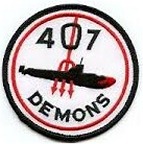 I
had to take a radar flight in an Anson and as we went down the runway,
the pilot asked me to do something and I reached over my head and hit an
engine switch and shut down one engine so the pilot did a ground loop and
said I did it. You crank it. When we finished the course, were posted to
407 – the Canadian Demon Squadron. We were stationed in Devon. The night
we arrived, a Wimpy with the new engines was being test flown on one engine
and crashed and burned at the end of the runway. All on board were killed.
Our first eight hour patrol, looking for U-Boats, was in July 1943. We
flew about 24 U-Boat patrols until January 1944 when they posted us to
Limevary North Ireland for maneuvers with the Fleet.
I
had to take a radar flight in an Anson and as we went down the runway,
the pilot asked me to do something and I reached over my head and hit an
engine switch and shut down one engine so the pilot did a ground loop and
said I did it. You crank it. When we finished the course, were posted to
407 – the Canadian Demon Squadron. We were stationed in Devon. The night
we arrived, a Wimpy with the new engines was being test flown on one engine
and crashed and burned at the end of the runway. All on board were killed.
Our first eight hour patrol, looking for U-Boats, was in July 1943. We
flew about 24 U-Boat patrols until January 1944 when they posted us to
Limevary North Ireland for maneuvers with the Fleet.
I must mention that on Remembrance Day in 1943 we had
been out about nine hours and when we were about 100 miles from the base,
we received a message that the base was fogged-in so we diverted to Leaming.
But it was also fogged-in so as a last resort I called the Search Light
Station for guidance to an open airport. They guided us right out over
the ocean and shut off lights. We were low on fuel and after 10 ½
hours in the air, one engine quit. The pilot took us up to 6000 feet and
told us to bail out. We had a crew of seven that night, so me being the
No. 1 WAG, I was third last
to leave. The tail gunner didn’t want to jump so I went back turned the
turret manually and told him to count 10 and pull the ripcord. I assisted
him out. Then I went back up to the front and bailed out myself. That’s
where that "O" ring came from. I guess it slipped back on my wrist when
I pulled it. I looked up and didn’t think it had opened but the wind picked
up and I could see lovely silk above.
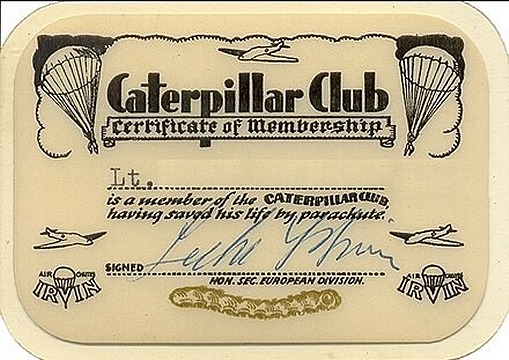
The fog base was approximately 50 feet . I came through the
fog at 50 feet heading for trees. I had heard someone say if you want to
steer a parachute, pull on shroud lines and I didn’t want approximately
50 miles per hour speed. I landed flat on my ass in a wet plowed field
and knew I was dead. But I wasn’t – but it was 2:30 in the morning. It
was a small field with a ditch full of water all around. I buried the parachute
as instructed and found the best way out of the field. I didn’t know where
we were, so I walked about a mile and found the village of Kanoctted. I
knocked on a door and was greeted by a man and shotgun. He thought I was
the German Air Force. It took some time to convince him. The actual Village
was Bromley in Kent. So I became a member of the Caterpillar Club (reserved
for air foce personnel who used a parachute to escape a doomed aircraft).
Another small thrill was on takeoff in October 1943 with
a load of depth charges. We lost an engine as we got off the ground and
had to jettison the charges in the bay. We landed on one engine. Later
on, we were turning over and I was in the tail turret having a smoke when
I saw trees going by! We had been given height in meters instead of feet
and lost hydraulics so we had no landing gear and no flaps, no brake and
bugger all but we had a good pilot. He had many hours instructing at Claresholm
and came back to base to land on grass by the runway. No one was even scratched.
We bombed four German destroyers around New Years. Forty-four
aircraft carried bombs that night. We also lit up a British destroyer one
night – we sure got the hell out of there in a hurry.
Half of Squadron 407 was transferred to Limavady, Northern
Ireland for training with the U.S. Navy. That ended in March 1944 and we
were given a chance to go to a different squadron or consider volunteering
for duty in the Pacific. I was posted to Warrington repatriation and ended
up in the hospital with acute sinusitis and had to have sinus surgery.
That meant having a hollow needle driven up the nose to drain the sinus.
I had this done four times at Warrington and once more at the Army Hospital
outside of London. It was no fun.
In the meantime, the rest of the crew except the pilot
left for home. After the hospital I had a chance to rejoin 407 but with
a different crew. A buddy of mine wanted me to join his crew which I almost
did but decided I would come home. My choice was lucky for me but sad for
the new crew as they were shot down in the channel on their first trip.
All were killed.
I came home in May 1944 and got married in June 1944.
I was posted to Pat (Patricia) Bay and rejoined my old crew. We flew out
of Pat Bay on sub patrol for one year (July 1944 to July 1945. I was commissioned
in December 1944 to Pilot Officer. Our daughter Judith Anne was born on
April 21 1945. In July 1945 I flew to Vancouver in a DC3 Dakota and was
discharged exactly four years to the day (July 17) that I had located to
the Manning Depot in Brandon.
Some of the best memories of England and Scotland were
the dances at Hammersmith Palace or Convent Gardens and also in Edin Bergen
at the Palais there. I also enjoyed a visit to the Soho District of London
– it was August and I got very drunk and woke up on the Flying Scotsman
just outside of Edenborough. Harold thought it quite funny but we loved
laying in the heather. A lady who owned a pub always left a bottle of Johnny
Walker Scotch for me.
I was promoted to Flying Officer just before discharge.
I could have gone to the Queen Charlotte Islands as Commanding Officer
but took my discharge. The planes I flew in were the Tiger Moth, Norseman,
Anson, Fairey Battle, Bolingbroke, Catalina, Botha, Wellington Wimpy and
Ventura. My last flight was in a Dakota DC3.
Al passed away in 2013 at the age of 92. His wife Grace
predeceased in 2002.
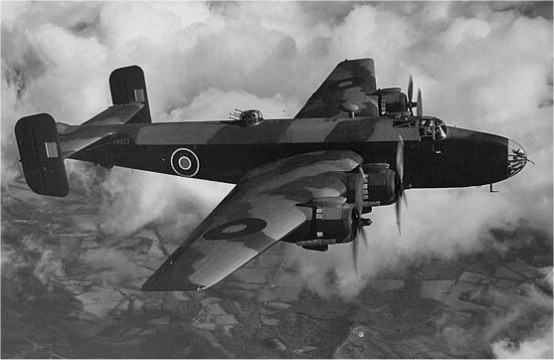
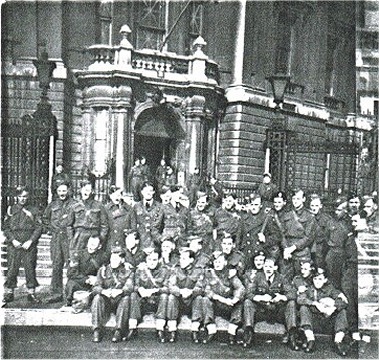
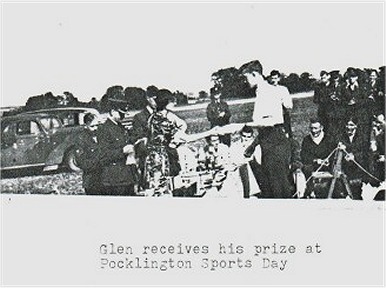 We
had a big field day at Pocklington and the rivalry between RCAF & RAF
was pretty intense. I think we piled up more points, it's on record in
Wings Abroad but that's not the story. I was the first to go up for my
prize being presented by the wife of the Group AOC, an Air Marshal, she
was a real Brit. Now I was just a raw kid from a small town in Saskatchewan
and no one had ever told me that a gentleman waits for a lady to offer
her hand before shaking. I had never before been awarded anything without
a handshake so I took my prize in the left hand and held out my right.
She paused. I held it out there. Then she took it. I learned a little of
England and she learned a little of Canada that day. Probably did us both
good.
We
had a big field day at Pocklington and the rivalry between RCAF & RAF
was pretty intense. I think we piled up more points, it's on record in
Wings Abroad but that's not the story. I was the first to go up for my
prize being presented by the wife of the Group AOC, an Air Marshal, she
was a real Brit. Now I was just a raw kid from a small town in Saskatchewan
and no one had ever told me that a gentleman waits for a lady to offer
her hand before shaking. I had never before been awarded anything without
a handshake so I took my prize in the left hand and held out my right.
She paused. I held it out there. Then she took it. I learned a little of
England and she learned a little of Canada that day. Probably did us both
good.
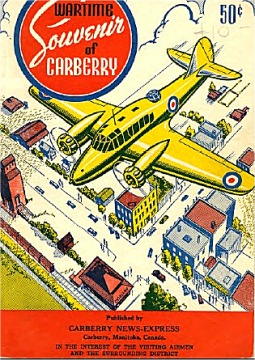
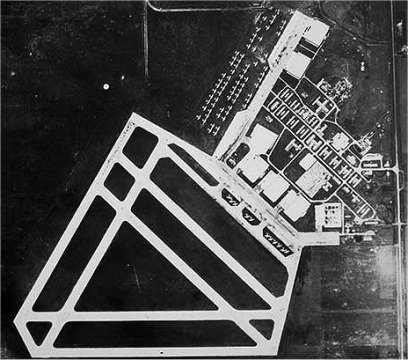

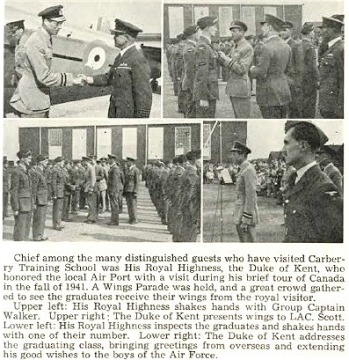
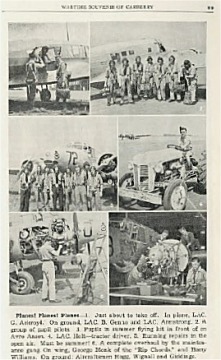
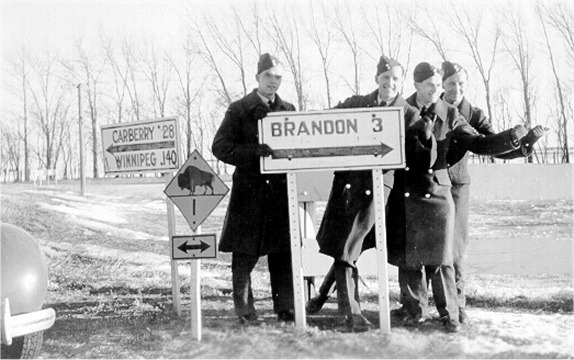
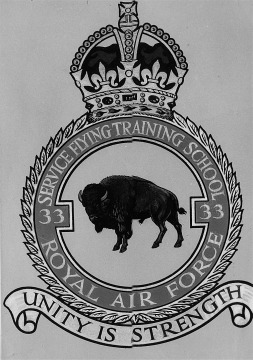
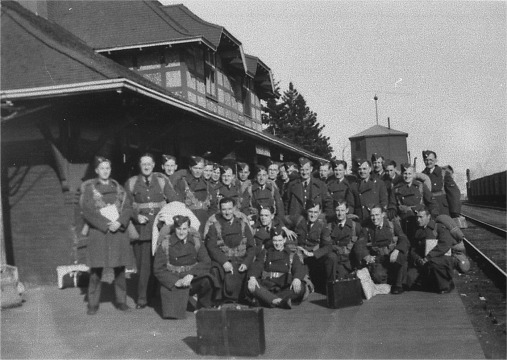
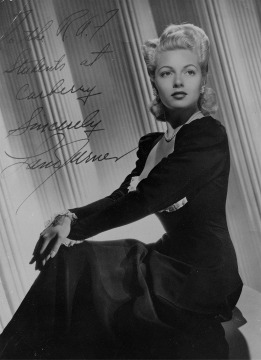
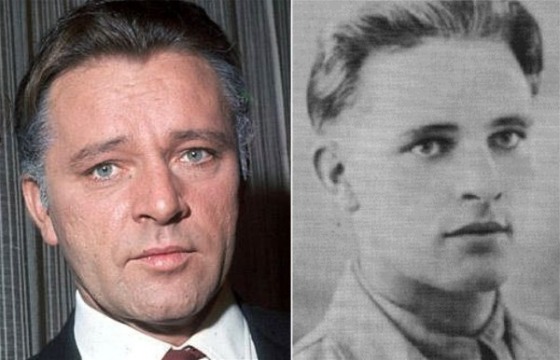
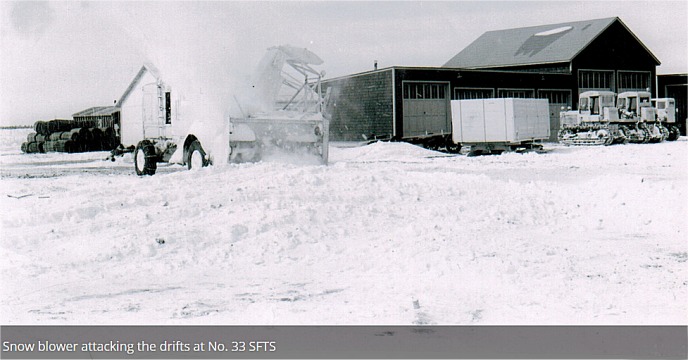
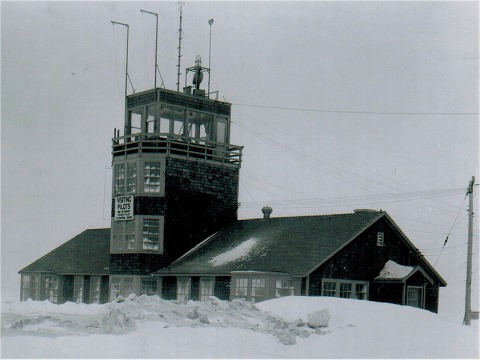
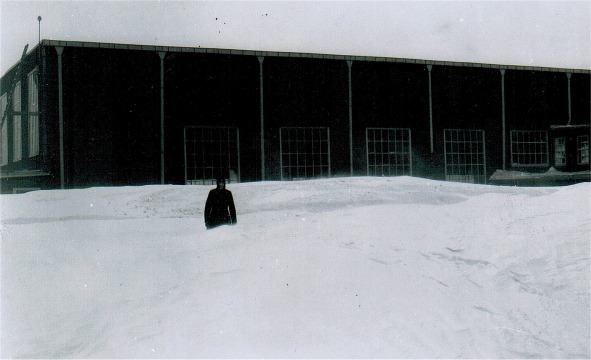
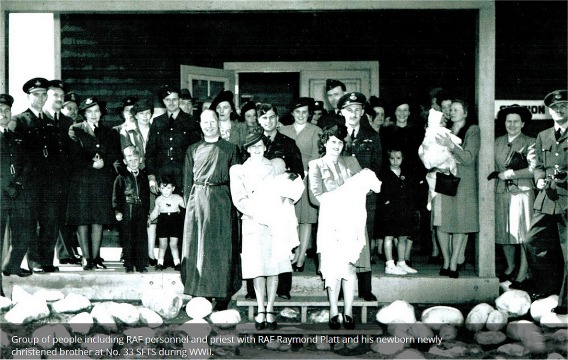 .
.

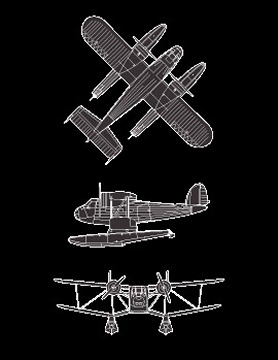
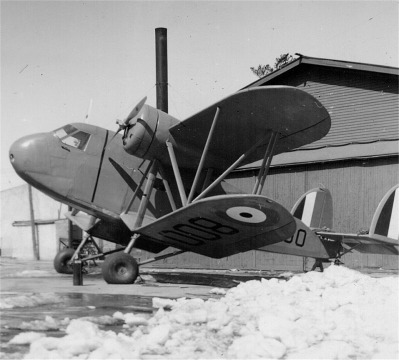
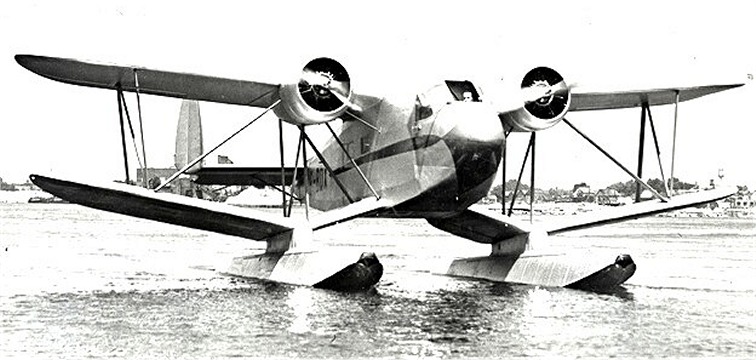
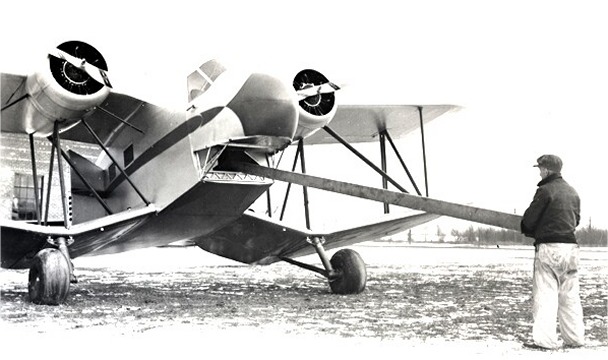
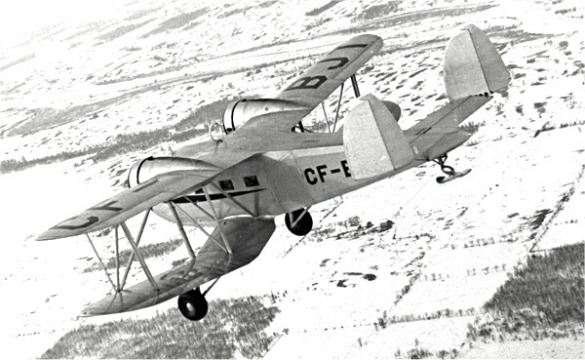
 At that
time, 21-year-olds (army enlistees) were given one month training. So I
was a "Grenadier" for a month, but had already decided on the Air Force.
No propaganda had any influence on my decision to join the RCAF – it just
seemed the right time and of course, everyone wanted to be a pilot. But
at that time they had too many pilots so my next choice was Wireless
Air Gunner.
At that
time, 21-year-olds (army enlistees) were given one month training. So I
was a "Grenadier" for a month, but had already decided on the Air Force.
No propaganda had any influence on my decision to join the RCAF – it just
seemed the right time and of course, everyone wanted to be a pilot. But
at that time they had too many pilots so my next choice was Wireless
Air Gunner.
 I
had to take a radar flight in an Anson and as we went down the runway,
the pilot asked me to do something and I reached over my head and hit an
engine switch and shut down one engine so the pilot did a ground loop and
said I did it. You crank it. When we finished the course, were posted to
407 – the Canadian Demon Squadron. We were stationed in Devon. The night
we arrived, a Wimpy with the new engines was being test flown on one engine
and crashed and burned at the end of the runway. All on board were killed.
Our first eight hour patrol, looking for U-Boats, was in July 1943. We
flew about 24 U-Boat patrols until January 1944 when they posted us to
Limevary North Ireland for maneuvers with the Fleet.
I
had to take a radar flight in an Anson and as we went down the runway,
the pilot asked me to do something and I reached over my head and hit an
engine switch and shut down one engine so the pilot did a ground loop and
said I did it. You crank it. When we finished the course, were posted to
407 – the Canadian Demon Squadron. We were stationed in Devon. The night
we arrived, a Wimpy with the new engines was being test flown on one engine
and crashed and burned at the end of the runway. All on board were killed.
Our first eight hour patrol, looking for U-Boats, was in July 1943. We
flew about 24 U-Boat patrols until January 1944 when they posted us to
Limevary North Ireland for maneuvers with the Fleet.

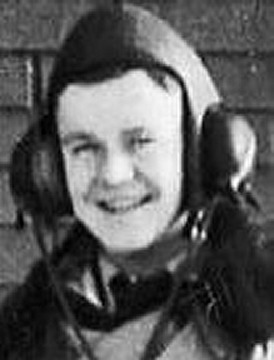 .
.